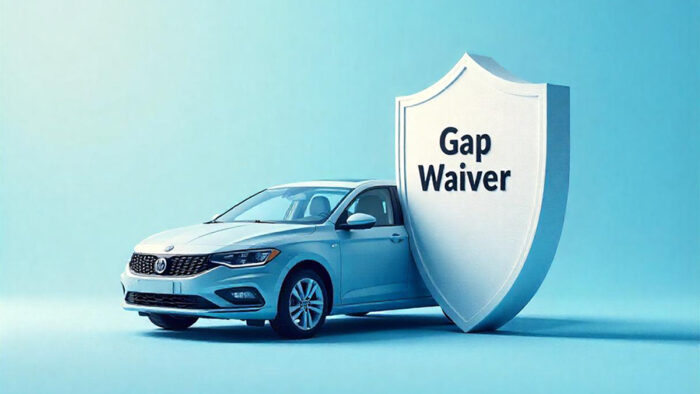A GAP (Guaranteed Asset Protection) waiver, also known as a GAP addendum, is a type of coverage specifically designed to shield car owners from the financial strains of having more debt on their auto loan or lease than the current market value of their car. It is a gap protection insurance plan that protects the financial security of car owners that took out an auto loan or lease.

A car that is totaled or stolen soon after purchase may leave the owner in a difficult state, especially if they took out an auto loan. This scenario can ultimately lead to having a “gap” in insurance or leaving their policy “upside down.”.
Nevertheless, purchasing a GAP waiver alongside other auto insurance policies guarantees that the car owner won’t be left with the remaining loan or lease balance. This gives vital financial stability and peace of mind in the event of unforeseen situations, such as car theft.
How Does A GAP Waiver Work?
In a situation where your car was severely damaged beyond repair in the event of an accident or it got stolen, a GAP waiver covers the remaining balance on your auto loan up to a specific limit. The specific amount waived by a GAP waiver largely depends on the lender or the lending institution you took out the auto loan from.
If you do not have a GAP waiver and your car gets stolen or totaled, your auto insurance policy will only provide coverage for the actual cash value of your car. You will be deemed responsible to pay for the remaining balance on your auto loan.
What Does Gap Waivers Cover?
GAP waivers covers stolen and damaged cars that are beyond repair. It offers coverage for;
- Remaining loan balance.
- Total loss payments.
- Financed-add ons.
- Unpaid taxes or fees on the car.
- Cost of insurance deductibles up to a specific limit.
What is Not Covered By Gap Waivers?
GAP waivers will not cover expenses related to;
- Past due loan payments.
- Regular maintenance costs.
- Insurance premiums.
- Traffic tickets.
- Loan balance over a specified LTV
- Loan interest accrued after the date your car was stolen.
- Late charges.
- Legal fees.total
In addition, a GAP waiver does not provide coverage for non-financed vehicles and loan payments on vehicles that are typically not covered by the waiver. It is important to pay close attention to the fine print of your policy document in order to have an understanding of what it covers and what it does not.
What is The Difference Between A GAP Waiver And GAP Insurance?
While GAP waiver and GAP insurance work in similar ways, they have their own distinctive features as well. The two terms are often used interchangeably, but the major difference between these two types of insurance coverage is where and how it was purchased.
A GAP waiver is usually found in a financing or leasing arrangement that enables the lender to waive the remaining amount owed on a car in the case of a catastrophic loss or theft. This implies that the lender will not demand payment of the difference between the insurance payout and the outstanding loan or lease debt from the borrower in the event that the vehicle is totaled.
On the other hand, GAP insurance is a stand-alone insurance policy that serves a similar purpose to that of a GAP waiver, but it is purchased separately for car insurance. In the event of a complete loss, it covers the difference between the vehicle’s actual cash worth and the remaining balance on the loan or lease.
The main difference between GAP insurance and a GAP waiver is how they are obtained, even if both insurance seeks to safeguard against financial loss in the event that a car is totaled or severely damaged.
Which Should I Choose: GAP Waiver or GAP Insurance?
The answer to this question depends on your lender. Some lenders mandate buying a GAP waiver, while others do not. If your lender does not require you to get a GAP waiver, it is possible to save money by purchasing GAP insurance alongside your auto insurance policy.
In essence, the decision as to whether to purchase a GAP waiver or GAP insurance is to be determined by your lender or leasing company, as well as your individual circumstances.
Bottom Line
A GAP waiver is an essential source of financial security for car owners who finance or lease their cars. It provides peace of mind and guards against unforeseen financial burdens by paying the difference between the insurance payout and the remaining loan or lease balance in the event of a severe loss.
There are several insurance companies that offer GAP waivers to vehicle owners who seek maximum financial protection. You can get the best offer by shopping around and comparing quotes from two or more insurance companies. If you have auto insurance in place, you can reach out to your insurer to know how much it would cost to add a GAP waiver to your policy.



